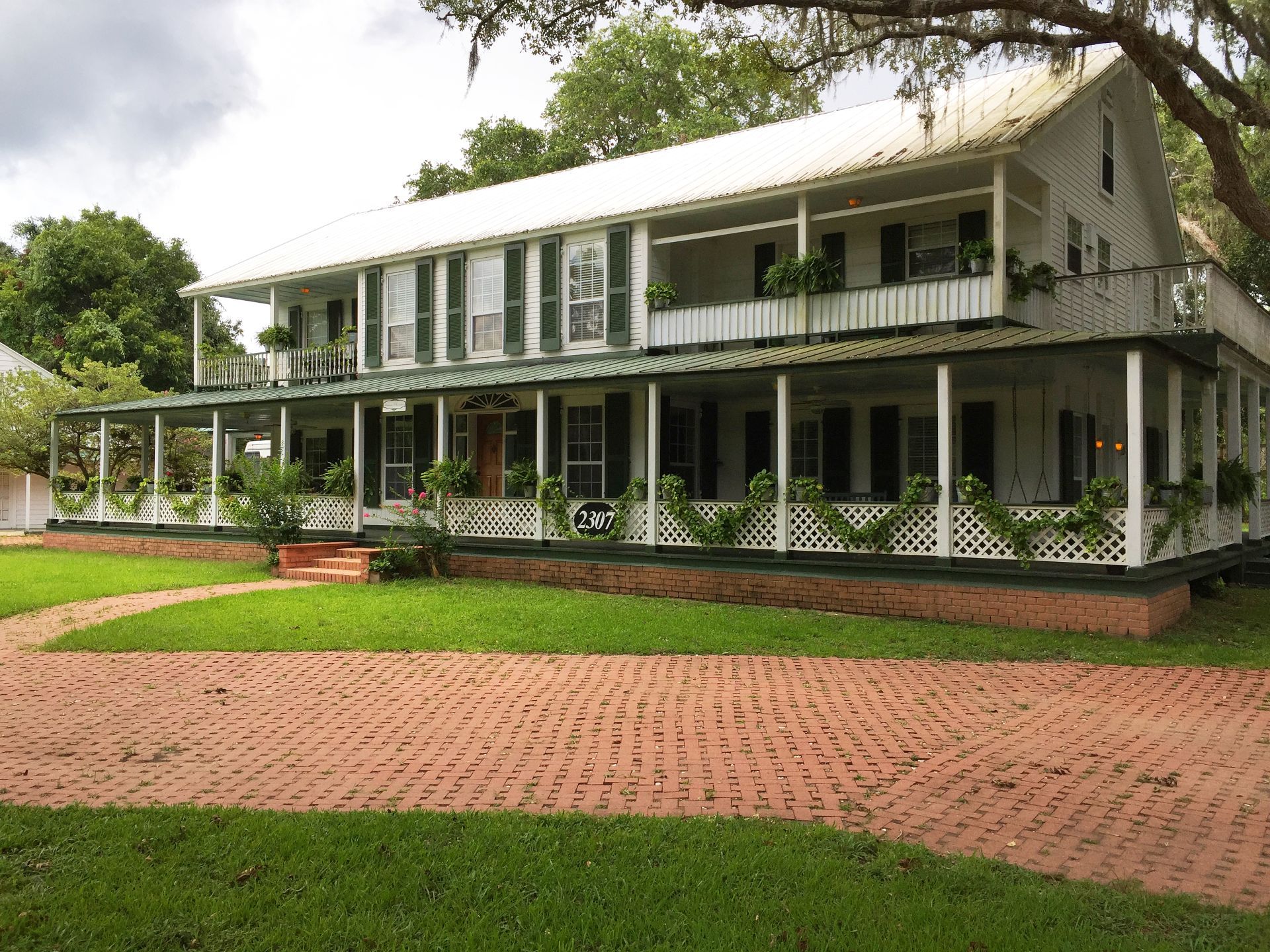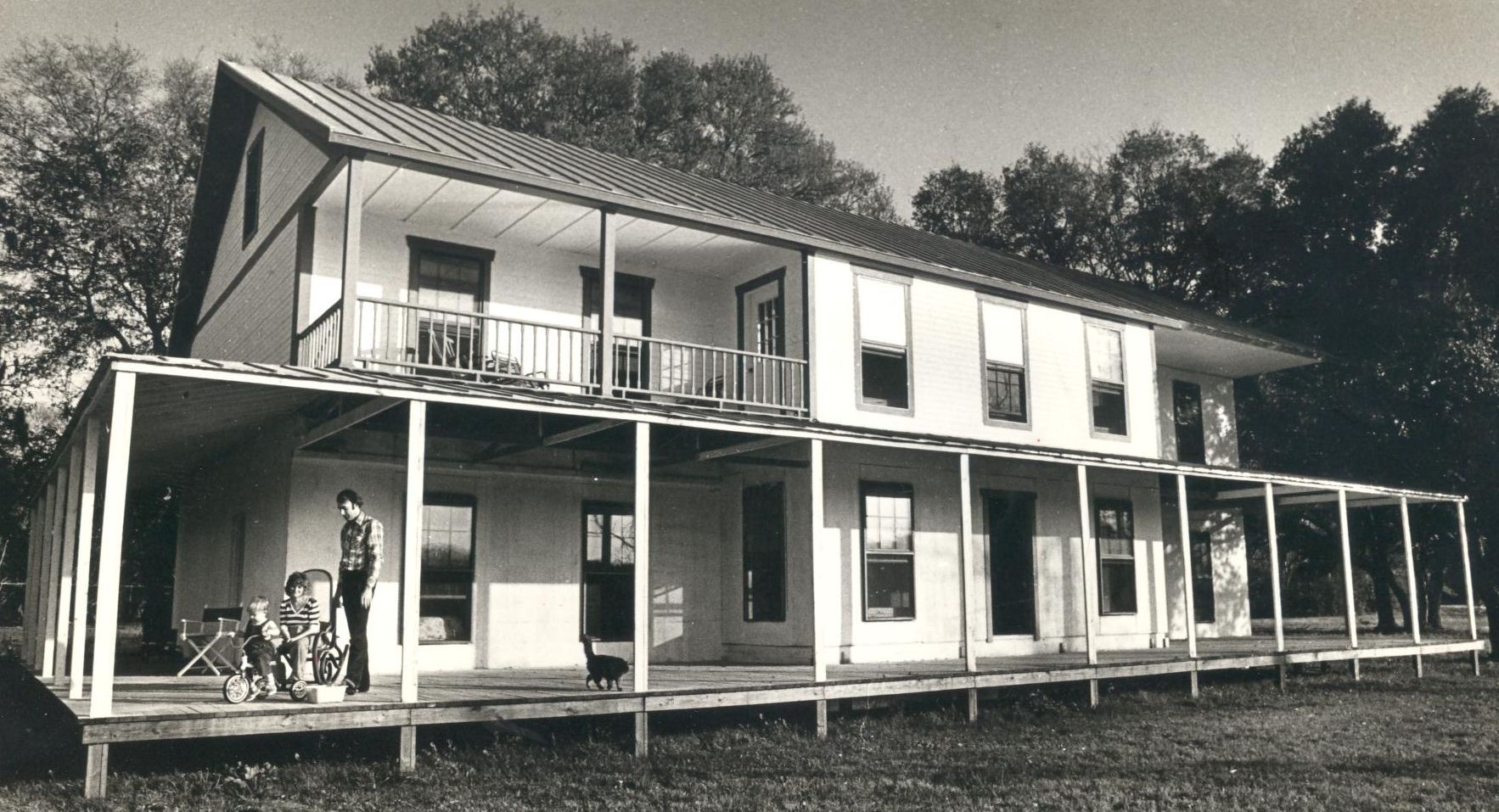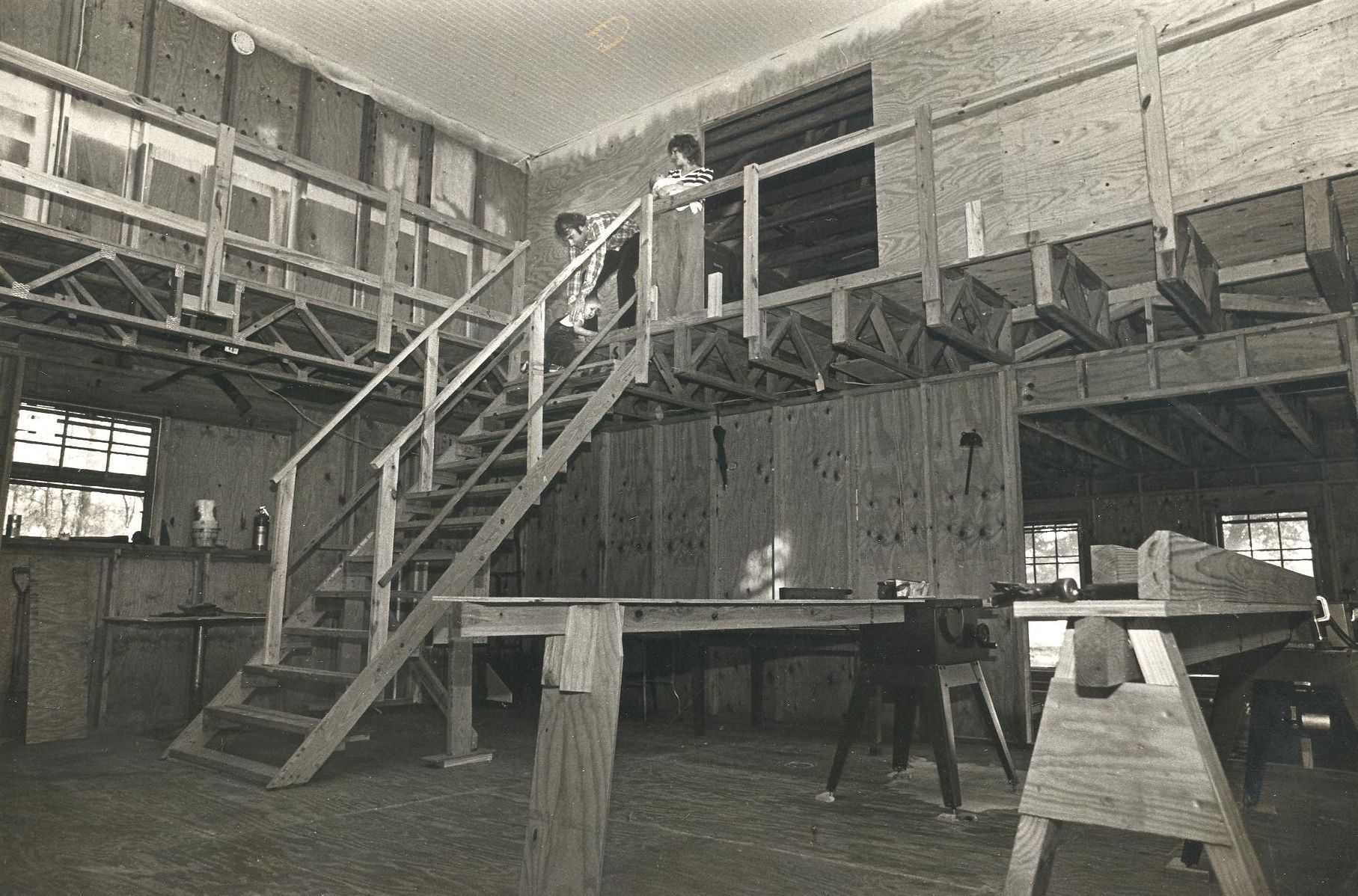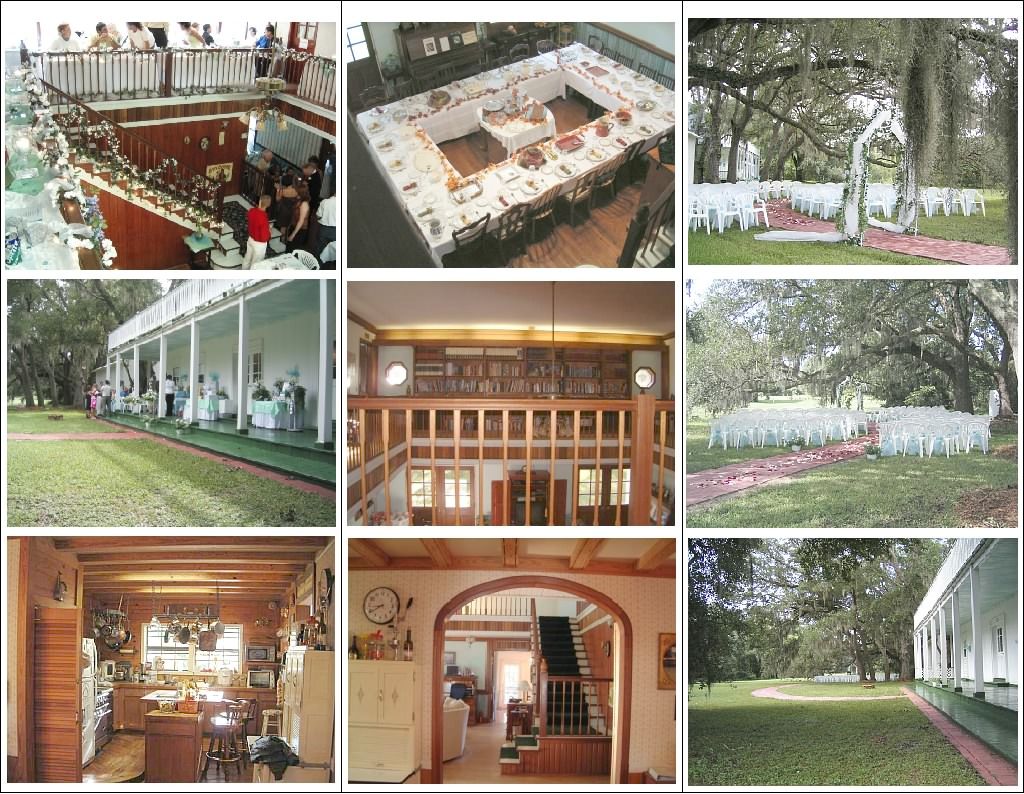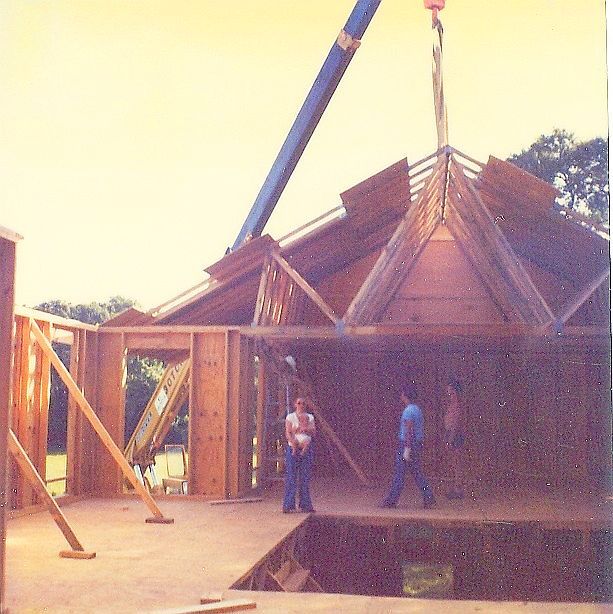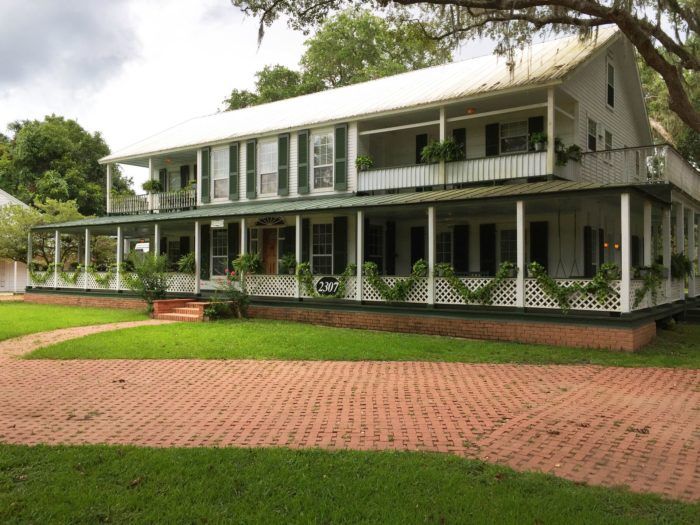
This home has 2368 sq.ft. of verandas, some of them 16 feet deep. This home has proven its energy efficiency. With 3,712 square feet inside, the entire house is heated/cooled with a water source heat pump located inside under the stairs that uses less power than two little space heaters. It draws 10 amps at 240 volts. That is only 2400 watts cooling or heating. This includes the submersible well pump that provides the water. The water flowing out of the heat pump is piped under the backyard to a pond that was once a navigable waterway for the plantation. It has to be 98 degrees outside with my wife cooking a big dinner to have the 3 ton heat pump stay on continuously. This energy efficiency was achieved without using any extreme (and expensive) construction techniques. Key factors are the local Texas coastal climate with cold winter days being rare and coastal winds being common. Siting and orientation was chosen to use shade from the huge live oak trees on our 5 acre lot. Stopping air flow leaks was a beneficial side effect of detailed sealing to keep out roaches and ants. In our climate, the outside air temperature is not the key factor determining the heat flow through the walls. The heat load is determined by the temperature of the wood siding and window panes. If the direct sun is hitting the walls, the wood siding can be 20 degrees hotter than the air even when painted white. When the sun rises over the tops of the trees, the verandas take over the shading job. The 1800s Louisiana plantation homes often had two store verandas that kept the sun off all the walls all the time.
Living in an owner-built home while building it is a project totally different than a traditional professional build. It takes a LOT longer to finish. But you discover changes you want as you proceed; as you learn what is working or not working. We enclosed the entire house and completed the interior of only the lower floor north wing in the first 6 months… kitchen, dining room, utility+bathroom. With a bed and table in the dining room we had a great 480 sqft ‘tiny house’ inside our 3800 sqft big house. During Hurricane Alicia in 1983, 10 people spent the night in our Tiny Place. After we moved in, working on the other rooms (plumbing, electric, heating, cooling, walls, ceilings, floors, stairways, attic) and the unfinished outside (siding, roofing, shutters, driveway, verandas) was a 20 foot commute each night and every weekend for many more years. We had 5 acres outside the city limits so we could do almost anything we wanted. No inspector ever showed up. My job as a power plant engineer gave me a lot of experience with heat transfer. And living in a beach house for 3 years revealed the reality of heat conduction, convection, and radiation in south Texas. I learned that in the hot sunny Texas coastal climate, radiation was a huge contributor to making my beach house hot inside. Conduction was a much smaller factor. Since the Gulf of Mexico water was usually 10-15 degrees cooler than the air in spring and early summer, the ocean breezes doing the convection were good at cooling the house that was being heated by the hot sand and hot sun. Hurricanes can destroy a house that is only 20 miles from the shoreline. All of Valcour Verandas’ walls are sheathed with ½” plywood. The plywood sheets are glued the full length of every stud and plate and stapled every 6 inches. This makes a diaphragm the will not be wiggled apart by the strongest hurricane. And no convection air (or bugs) can get through. The roof uses 36 foot trusses that have 5/8” plywood sheathing also glued and stapled. The roof was built on the driveway and lifted onto the second floor top plates with a rental crane. The roof has no penetrations… no chimney, no vent pipes, no satellite dish. So there is nothing to spring a leak 20 years later from hot sun expansion/contraction. The original widows were single pane aluminum due to budget constraints. They have been replaced with double pane vinyl windows. Higher R windows are not needed. At Galveston, the average of cold day temperatures is 50. The average of hot day temperatures is 87. With the inside temperature set at 70, our windows see an average temperature differential of 20 degrees in winter and summer. There would never be a return on investment from spending hundreds of dollars more on a high R value window.
